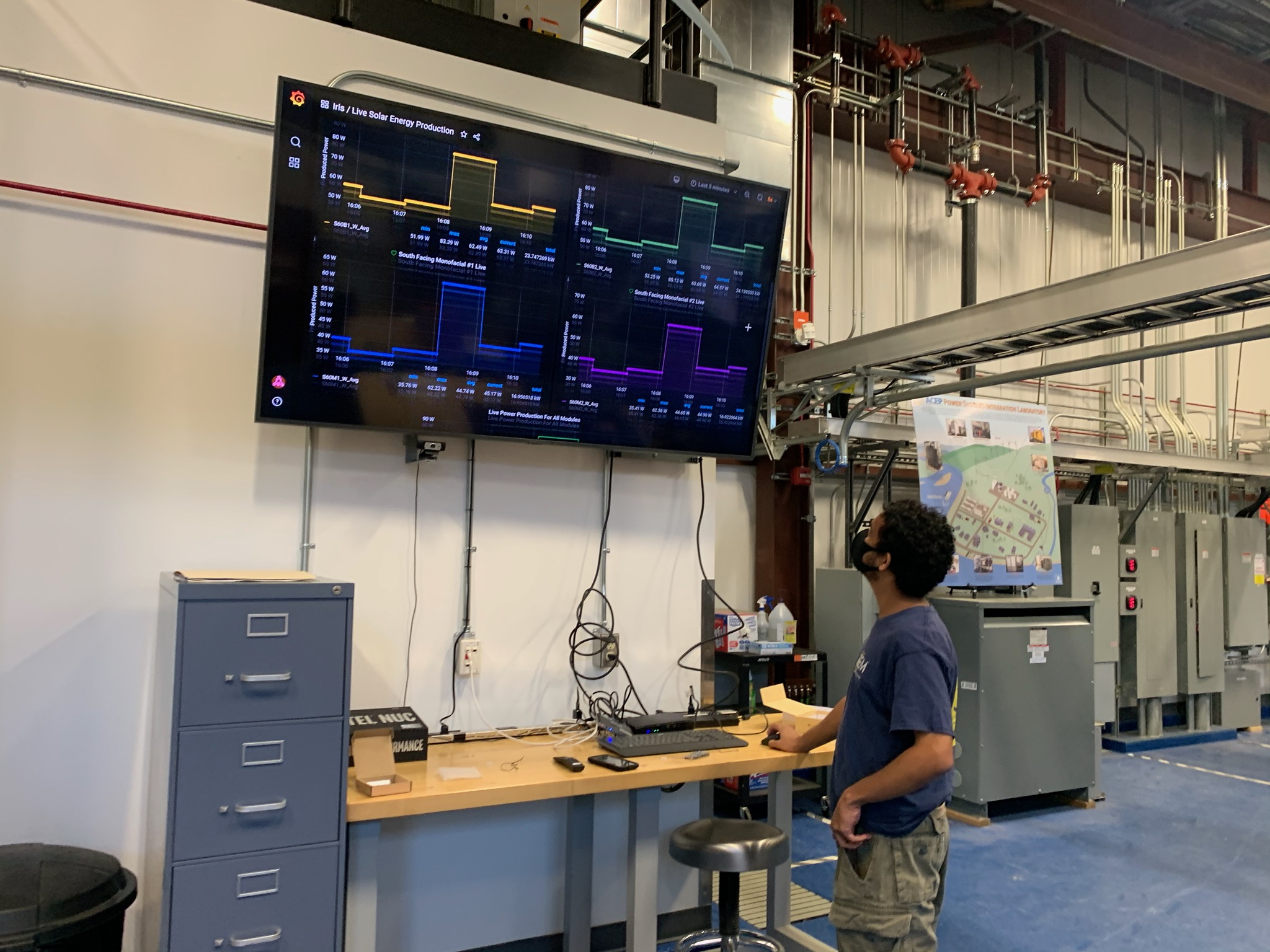‘Megatron’ Improves Lab Customer Experience and Collaboration

A large monitor has been installed in the ACEP Power Systems Integration Lab. The affectionately named “Megatron” will allow PSI and Energy Technology Facility staff to virtually interact with clients and colleagues around the world directly from the lab and provide real-time visual system monitoring during tests.
“Visitors to the lab will have a much more visual experience of the lab's microgrid capabilities with large icon displays of what each piece of equipment is simulating,” says ACEP senior research engineer, Rob Bensin.
The new monitor is connected to both the lab’s Supervisory control and data acquisition (SCADA) system and an independent computer. “It gives us a highly visible platform to convey custom information to diverse audiences in the lab,” says ACEP power systems integration programmer, Tawna Morgan.
Morgan adds “For education purposes, we can display processes running in the lab in a simplified manner to highlight microgrid concepts.” And, during testing the team can display more complex information, such as analysis algorithms applied to results in real-time, permitting greater insight during the testing process.
ACEP's Arsh Chauhan uses the Megatron in the PSI lab. Photo by Gwen Holdmann.
A large monitor has been installed in the ACEP Power Systems Integration Lab. The affectionately named “Megatron” will allow PSI and Energy Technology Facility staff to virtually interact with clients and colleagues around the world directly from the lab and provide real-time visual system monitoring during tests.
“Visitors to the lab will have a much more visual experience of the lab's microgrid capabilities with large icon displays of what each piece of equipment is simulating,” says ACEP senior research engineer, Rob Bensin.
The new monitor is connected to both the lab’s Supervisory control and data acquisition (SCADA) system and an independent computer. “It gives us a highly visible platform to convey custom information to diverse audiences in the lab,” says ACEP power systems integration programmer, Tawna Morgan.
Morgan adds “For education purposes, we can display processes running in the lab in a simplified manner to highlight microgrid concepts.” And, during testing the team can display more complex information, such as analysis algorithms applied to results in real-time, permitting greater insight during the testing process.


